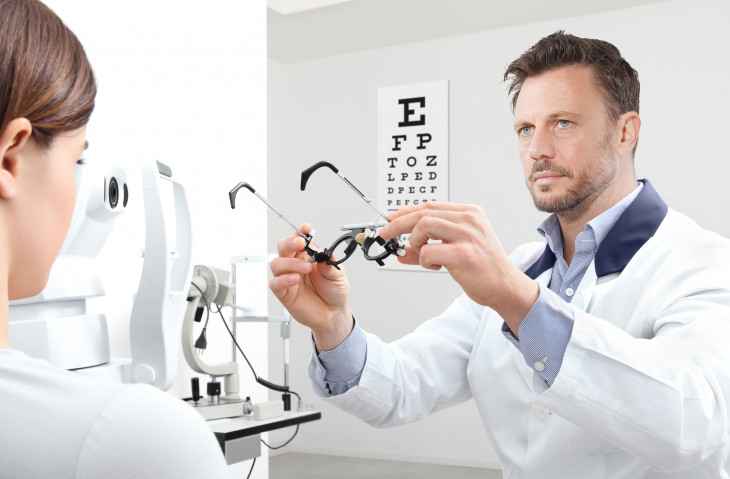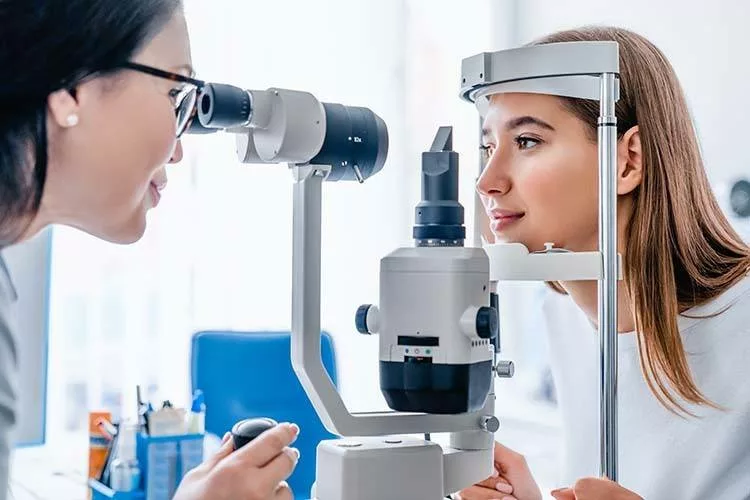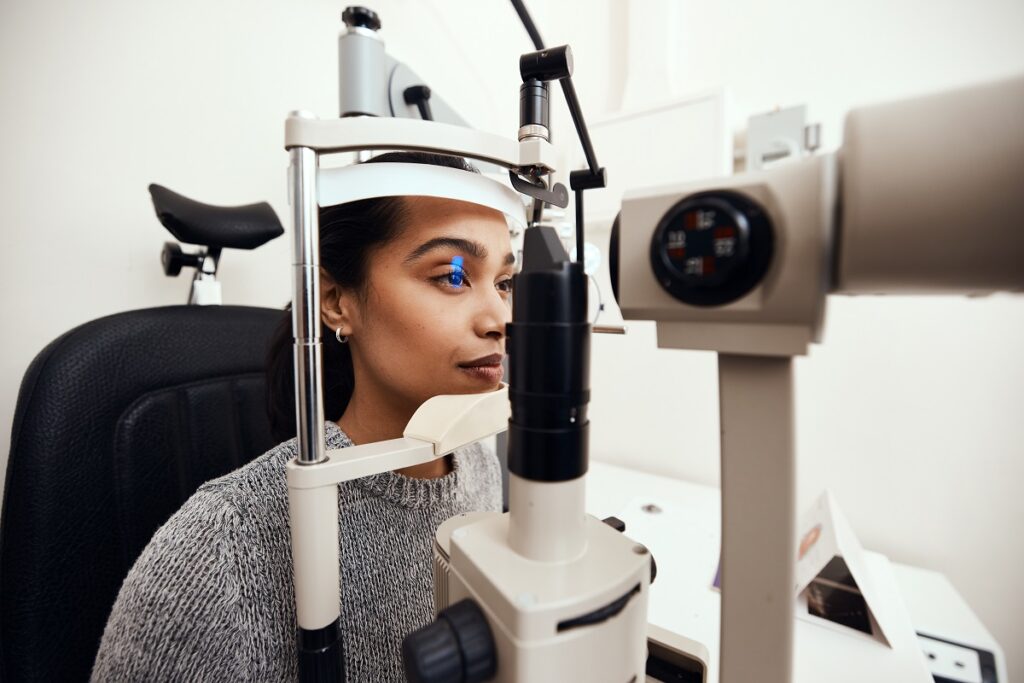Comprehending the Role of Your Eye Doctor in Preserving Vision
Comprehending the Role of Your Eye Doctor in Preserving Vision
Blog Article
Discovering the current Technical Innovations in Optometry and What They Mean for Eye Doctors
In the ever-evolving field of optometry, current technological improvements are reshaping exactly how experts come close to eye treatment. From the accuracy of Optical Coherence Tomography to the nuanced understandings used by AI-driven analysis tools, these developments are establishing brand-new requirements in person analysis and therapy. Teleoptometry is positioned to redefine access, ensuring that proficiency transcends geographical constraints. As these innovations penetrate the practice, eye doctors are faced with the challenge of embracing these tools to boost patient outcomes. Yet, the concern remains: exactly how will these technological changes redefine the duties and duties within the profession?
Innovations in Diagnostic Devices
Advancing the field of optometry, innovations in diagnostic tools have revolutionized the method eye treatment specialists analyze and detect visual impairments and ocular conditions. The previous years has witnessed substantial technological innovations, making it possible for more accurate and detailed assessments. Optical Comprehensibility Tomography (OCT), for instance, supplies high-resolution cross-sectional photos of the retina, permitting for the early discovery of conditions such as glaucoma and age-related macular deterioration. This non-invasive imaging technique has actually ended up being essential in modern optometric method.
An additional secret advancement is the intro of sophisticated corneal topography systems, which map the surface curvature of the cornea with precision. These tools are specifically helpful for fitting call lenses and detecting corneal disorders. Electronic retinal imaging has actually changed conventional ophthalmoscopy, providing in-depth, panoramic views of the retina that assist in complete aesthetic assessments.
The growth of wavefront aberrometry has actually additionally been critical, allowing the analysis of refractive mistakes with unmatched accuracy (Eye Doctor Optometrist). This technology helps in tailoring corrective lenses and improving medical end results for refractive surgical treatments. Jointly, these diagnostic advancements encourage optometrists to deliver superior person care, making certain early intervention and customized treatment strategies, ultimately improving aesthetic health end results
AI in Patient Monitoring
Structure on the structure of innovative analysis devices, the unification of synthetic knowledge (AI) in patient administration stands for a transformative jump for optometry. AI systems are progressively utilized to boost efficiency, precision, and customization in client care.
In addition, AI-driven platforms help with streamlined individual communications and management procedures. Automated scheduling, digital appointments, and customized follow-up plans not only enhance client fulfillment yet additionally enhance time management for experts. These systems can triage patients based upon the necessity of their problems, ensuring that those in vital need receive punctual focus.
Moreover, AI boosts decision-making by providing eye doctors with evidence-based suggestions and treatment paths. By integrating data from electronic health documents, AI tools supply understandings that educate professional choices, reducing the threat of mistakes and improving individual results. As AI proceeds to develop, its duty in patient administration will likely expand, reshaping the landscape of optometric care.
Breakthroughs in Retinal Imaging
In the realm of optometry, retinal imaging has actually experienced remarkable technological advancements that are boosting analysis capacities and patient treatment. Developments such as Optical Coherence Tomography (OCT) and fundus digital photography have actually reinvented how eye doctors imagine and examine the retina. OCT, in specific, gives high-resolution, cross-sectional photos of the retina, enabling the comprehensive assessment of its layers. This ability is very useful for early discovery and monitoring of problems like glaucoma, diabetic person retinopathy, and age-related macular degeneration.
Enhanced imaging methods like OCT angiography are additional refining diagnostic precision. read the full info here This non-invasive technique maps blood circulation in the retina, offering critical insights right into vascular health without the need for dye shots. Furthermore, flexible optics modern technology is being incorporated right into retinal imaging systems to fix eye aberrations, providing extraordinary photo clearness. Such improvements help with the identification of minute retinal modifications that can represent condition development.
In addition, improvements in expert system are enhancing retinal imaging by making it possible for automatic evaluation of huge datasets. These systems aid eye doctors in recognizing patterns indicative of pathology, consequently enhancing diagnostic accuracy and performance. Jointly, these innovations are transforming retinal imaging right into a foundation of contemporary eye treatment, boosting outcomes and increasing therapeutic possibilities.
Teleoptometry's Growing Function
Teleoptometry is increasingly coming to be a vital element of eye treatment, driven by developments in electronic communication and diagnostic tools. As optometry welcomes digital change, teleoptometry facilitates remote appointments, allowing eye doctors to expand their services beyond traditional boundaries. This is specifically beneficial in rural and underserved areas where access to specialized eye care is often minimal. By leveraging high-resolution video conferencing and advanced retinal imaging, eye doctors can carry out extensive eye examinations from afar, guaranteeing timely medical diagnosis and therapy.
The integration of fabricated knowledge (AI) further boosts teleoptometry, allowing the analysis of visual data and aiding in the discovery of eye problems such as glaucoma and diabetic person retinopathy. AI-powered algorithms can swiftly translate intricate imaging data, supplying eye doctors with valuable understandings that boost medical decision-making.
In addition, teleoptometry supports connection of treatment via seamless assimilation with electronic health records (EHRs), permitting eye doctors to preserve extensive client histories. When seeking advice from with various experts., this makes sure that people get customized and constant care even.
Despite these benefits, Check This Out obstacles remain, consisting of guaranteeing data safety and security and managing individual expectations. Teleoptometry stands for a significant stride in the direction of more available, efficient, and patient-centered eye treatment. As innovation evolves, its duty is poised to increase further.

Future Trends in Eye Care
A myriad of innovative trends is set to reshape the future of eye treatment, driven by technological developments and the advancing demands of individuals. One substantial pattern is the integration of fabricated knowledge (AI) in diagnostics, which guarantees to improve the precision and performance of eye exams. AI formulas can examine large amounts of information from retinal pictures, possibly detecting conditions like diabetic person retinopathy and glaucoma earlier than conventional approaches.
In addition, individualized medication is acquiring traction in optometry, with genetic testing educating customized treatment plans. This technique intends to enhance individual results by tailoring interventions to individual hereditary accounts. Wearable technology, such as wise contact lenses, is additionally on the perspective, providing real-time tracking of intraocular pressure or sugar levels, therefore giving continuous understandings right into eye and systemic wellness.
The adoption of increased truth (AR) and digital fact (VIRTUAL REALITY) in training and client education and learning is one more arising fad. These technologies use immersive experiences that can boost understanding and abilities both for eye doctors and people. As these patterns advance, eye doctors must stay abreast of technological improvements to give innovative treatment, ensuring enhanced person results and contentment in the dynamic landscape of eye treatment.
Conclusion

Jointly, these diagnostic advancements encourage eye doctors to deliver superior individual treatment, guaranteeing early treatment and tailored therapy methods, inevitably enhancing aesthetic health outcomes.

As these innovations continue to evolve, eye doctors need to adapt and integrate them right into technique, inevitably optimizing process performance and raising the standard of eye care provided to individuals.
Report this page